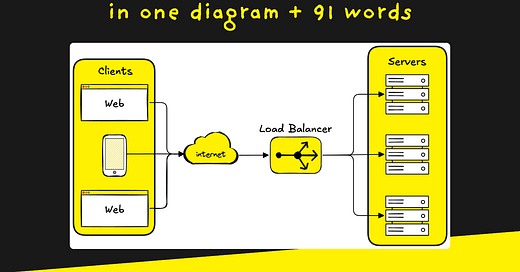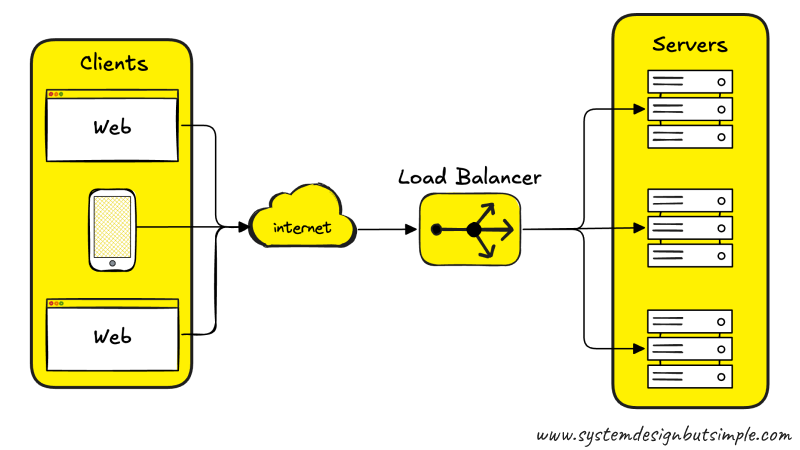A load balancer distributes network traffic across multiple servers so no single one gets overwhelmed.
It sits between clients and servers, rerouting traffic if a server fails to keep things running smoothly.
This helps ensure fast, reliable access to apps and services.
You need to know
Common ways to share traffic: round-robin, least connections, and IP hash.
Load balancers ping servers regularly to make sure they’re up before sending traffic.
They can be hardware devices, software, or cloud-based services.
Popular technologies
nginx
AWS Elastic Load Balancer
Azure Load Balancer
Like posts like this?
Every week, you'll get a new system design concept, broken down like this one.
Free subscribers also get a little bonus:
🎁 The System Design Interview Preparation Cheat Sheet
If you're into visuals, paid subscribers unlock:
→ My Excalidraw system design template – so you have somewhere to start
→ My Excalidraw component library – used in the diagram of this issue
→ 12 Back-of-the-Envelope Calculations Every Engineer Should Know
No pressure though. Your support helps me keep writing, and I appreciate it more than you know ❤️





